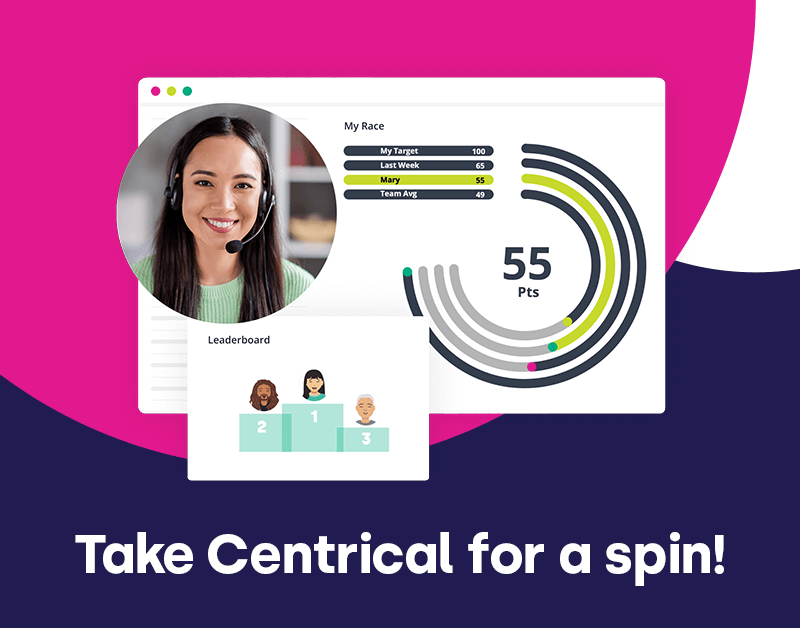7 Ways to Use Elearning in ANY Gamification Project
I’ve noticed that every time I write about enterprise gamification – from it being the quantified-self for employee performance engagement through sales gamification, customer service gamification, social gamification and more – eLearning always comes up.
There are several explanations for why elearning always pops up when we discuss enterprise gamification:
- It works. Elearning works exceptionally well, by driving individual achievement through the use of completion game mechanics, feedback and recognition. Something about the pace, the rewards and the way in which most elearning material is pre-prepared trumps class-based learning. This has been recognized by many: the internet is awash with material about elearning for an amazing amount of learning scenarios: school, high-school, university, moocs, and the workplace.
- Enterprises need elearning. There are many instances where elearning is important to the enterprises’ success. Employees can become more engaged if they know their job better, elearning can serve to coach the poorer performing employees, policies can be communicated and new product introductions can be made.
- Elearning is best served on the side. In many cases, elearning is not the core activity for an employee, but an important aside. For instance, when a customer service agent has some downtime, emotional intelligence elearning or elearning about new offerings is a valuable addition. Combining elearning into daily work tasks is more efficient and results in more information retention.
All of the above is why, in many cases, we see enterprise gamification projects where we first gamify various enterprise apps, from CRM to contact center and workforce optimization.
The second thing we do is simple: we integrate elearning into the gamification project, because it works well.
It also delivers a better ROI on both the gamification and elearning investment.
Having said all that, here are our 7 ways to integrate elearning into enterprise gamification:
Number 1: Micro learning
Micro-learning breaks learning into small bite-sized pieces. A short video about a new product, a quiz about the sexual-harrasment policy, a presentation about how to overcome customer anger in a call center environment. Made for this generation’s shorter attention spans, micro-learning is short and effective.
Micro-learning is a curriculum that is accessible anytime and anywhere. In the enterprise, micro-learning makes life easier for trainers since they need to develop shorter chunks of training that can be delivered anywhere. Another important micro-learning benefit it that it gives employees a sense of autonomy and control. They can choose what to learn and when, giving a sense of self-direction which is important to employee satisfaction. Many believe that micro-learning also results in better information retention, since information is accessed when the user needs it to complete a task.
To integrate micro-learning, decide on the model you will use to invoke it. For instance, you can gamify salespeoples’ learning of a new product that was introduced, or use micro-learning as a pre-requisite to get to play a sales competition. Micro-learning can result in recognition (an expert badge) or simply as a way to earn more points and advance in the game. Micro-learning can also be integrated in a coaching scenario, where an employee that isn’t performing well, can be rewarded for training – with the goal of coaching the employee with the information they are missing to do their job well.
Gamification can:
- Track the use of micro-learning and prove it took place
- Encourage the use of micro-learning through calls to action
- Provide much needed recognition and social proof for micro-learning
Number 2: elearning as a form of on the job training
Elearning that is combined into any gamification project is one of the most effective on-the-job training there is. For instance, a call center agent with poor customer satisfaction ratings can be directed to on-the-job training to amend that. A sales person that isn’t making enough new product proposals? Some on the job training about the new product offerings. It’s that simple.
Number 3: Learning as a form of communication
In many cases, we see enterprise gamification projects that are all about communication. Enterprises have a need to communicate objectives, goals and expected results. They want their employees to keep these in mind at work and balance their performance accordingly. Combining elearning can be an important way of communicating these expectations, such as the need to sell more of a certain offering etc.
Sometimes, the communications around the gamification project can be as impactful as its associated behavioral change – communicating performance objective and then seeing how your peers work is an important form of social proof.
Number 4: Integration with Learning Management Systems (LMS)
Enterprise gamification is evolving into a top tier that is integrated across several enterprise applications. To cover the employee application path at the workplace, from the main app through social and knowledge sharing and into LMS, enterprise gamification must integrate seamlessly with these applications, to deliver a cross app experience.
As a result, many gamification projects get their learning “feeds” from the LMS.
The LMS is also impacted, through gamification analytics, as the results coming from gamification analytics indicate how employees respond to the content in the LMS, resulting in further optimization of the content and its delivery.
Number 5: in-class gamification
Gamification can be used in class-based training, by encouraging team participation – here’s a case study on using gamification in a class environment, where the choice of team incentives drove strong engagement with the materials. After all, no one wants to be the person which brings their team down.
Number 6: on-boarding
On-boarding new employees is a form of training and elearning that enables self-directed learning for new employees. We’ve written about it here.
Number 7: refresher games
Sometimes, there is a need for gamification to fit into a larger communication campaign – a refresher course in areas such as safety, sexual harassment and compliance policies. Using gamification to deliver these short refresher courses and integrating them into the on-the-job duties and calls to action is more efficient and engaging.
Engage and motivate your frontline teams
Improve performance with an AI-powered digital coach
Deliver world class CX with dynamic, actionable quality evaluations
Boost performance with personalized, actionable goals
Nurture employee success with the power of AI
Listen and respond to your frontline, continuously
Drive productivity with performance-driven learning that sticks
Drive agent efficiency, deliver client results
Keep tech teams motivated and proficient on products and services while exceeding targets
Maintain compliance while building customer happiness and loyalty
Enlighten energy teams to boost engagement
Engage, develop, and retain your agents while driving better CX
Improve the employee experience for your reservations and service desk agents



 Madeleine Freind
Madeleine Freind
 Natalie Roth
Natalie Roth Linat Mart
Linat Mart












 Doron Neumann
Doron Neumann Gal Rimon
Gal Rimon Daphne Saragosti
Daphne Saragosti Ella Davidson
Ella Davidson Ariel Herman
Ariel Herman Ronen Botzer
Ronen Botzer